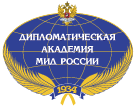Photo: Kremlin.ru
The President held, via videoconference, a briefing session with permanent members of the Security Council in the Kremlin, Kremlin informs.
Taking part in the meeting were Prime Minister Mikhail Mishustin, Federation Council Speaker Valentina Matviyenko, State Duma Speaker Vyacheslav Volodin, Deputy Chairman of the Security Council Dmitry Medvedev, Chief of Staff of the Presidential Executive Office Anton Vaino, Secretary of the Security Council Sergei Shoigu, Aide to the President Nikolai Patrushev, Defence Minister Andrei Belousov, Interior Minister Vladimir Kolokoltsev, Foreign Minister Sergei Lavrov, Director of the Federal Security Service Alexander Bortnikov, Director of the Foreign Intelligence Service Sergei Naryshkin, and Special Presidential Representative for Environmental Protection, Ecology and Transport Sergei Ivanov.
The Kremlin, Moscow, November 21, 2025
* * *
President of Russia Vladimir Putin:
Good evening, colleagues,
We have two important issues today – the priorities of Russia’s CSTO presidency in 2026, and the strategy of the Russian Federation to combat the practices of neocolonialism. The Minister of Foreign Affairs is invited to speak on the first and second issues, so we can begin.
Speaker of the Federation Council Valentina Matviyenko: Mr President, if I may.
Vladimir Putin: Yes, please, Ms Matviyenko.
Valentina Matviyenko: There is a lot of discussion in the world about President Trump’s 28-point peace plan for the Ukrainian crisis. May I ask you, before we consider the main issues on the agenda, to express your opinion, your attitude to this plan, and how it relates to your recent talks with President Trump in Alaska?
Vladimir Putin: Yes, of course, there is no secret here. We have had almost no public discussion of it, only in the most general terms, but it is not a secret. President Trump’s peace plan to resolve the situation in Ukraine was discussed before the meeting in Alaska, and during this preliminary discussion, the American side asked us to make certain compromises, to show, as they said, flexibility.
The main point of the meeting in Alaska, the main purpose of the meeting in Alaska, was that during the talks in Anchorage, we confirmed that despite certain complicated issues and difficulties, we nevertheless agree with those proposals and are ready to show the flexibility they asked for.
We have informed all our friends and partners of the Global South in detail on all these issues, including the People’s Republic of China, India, the Democratic People’s Republic of Korea, South Africa, Brazil, and many other countries, and the CSTO countries, of course. All our friends and partners, and I want to emphasise this, every single one of them supported these possible agreements.
However, we can see that there is a certain pause from the American side following the talks in Alaska, and we understand that this is connected with Ukraine’s de facto rejection of the peace plan proposed by President Trump. I believe this is precisely why a new version has emerged, essentially an updated plan consisting of 28 points.
We have received this text through the existing communication channels with the US administration. I believe it could also serve as a foundation for a final peace settlement. However, it is not being discussed in detail with us. And I can guess why.
The reason, in my opinion, is the same: the US administration has so far been unable to secure consent from the Ukrainian side, as Ukraine is opposed to it. Apparently, Ukraine and its European allies continue to entertain the illusion that they can inflict a strategic defeat on Russia on the battlefield. I believe this position is not so much the result of insufficient competence – I will not go into that now – but rather stems from an absence of objective information about the actual situation on the ground.
And it appears that neither Ukraine nor Europe realises what this could ultimately lead to. A very recent example is the situation in Kupyansk. As we recall, on November 4 – just two weeks ago – Kiev publicly stated that no more than sixty Russian service members were deployed in the city, and that Ukrainian forces would allegedly completely unblock it within the next few days.
However, I would like to inform you that even at that time – on November 4 – the city of Kupyansk was almost entirely under the control of the Russian Armed Forces. Our guys were, as they say, finishing off, clearing out individual blocks and streets. The fate of the city had already been determined.
What does this indicate? Either Kiev’s leadership lacks objective reporting about the developments on the front, or, even if they receive such information, they are unable to assess it objectively. If Kiev refuses to discuss President Trump’s proposals and declines to engage in dialogue, then both they and their European instigators must understand that what happened in Kupyansk will inevitably occur in other key areas of the front. Perhaps not as quickly as we would prefer, but inevitably.
And overall, this development suits us, as it leads to achieving the goals of the special military operation by force, through armed confrontation. However, as I have repeatedly stated, we remain ready for peace negotiations and for resolving issues through peaceful means. However, this, of course, requires substantive and meaningful discussion of all aspects of the proposed plan. We are prepared for this.
Let us now get down to the topics proposed for discussion at today’s Security Council meeting.
Please, Mr Lavrov.
read more in our Telegram-channel https://t.me/The_International_Affairs

 23:37 21.11.2025 •
23:37 21.11.2025 •























